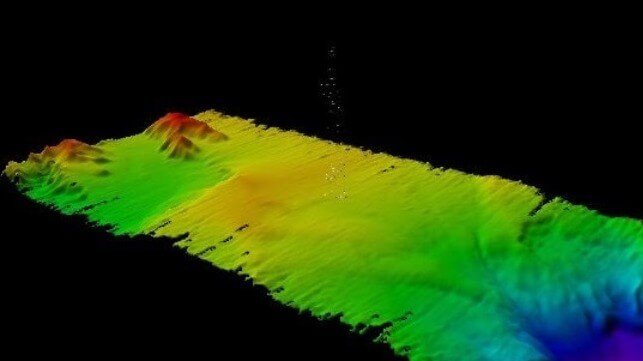NOAA Finds Three New Gas Seeps South of Aleutian Islands

Little is known about the seabed off Alaska, which has the least-surveyed waters of any U.S. state - but NOAA is beginning to change that this summer. Through a series of survey voyages along the Aleutians, it is mapping out the bottom, with particular attention to the Aleutian Trench - a deep trough extending from Russia to the Kenai Peninsula to the south of the Aleutians. On the first voyage, the survey vessel Okeanos Explorer discovered previously unknown gas seeps along the trench, located at a depth of 1.4 miles.
While checking the data collected by the ship’s sonar, watchstanders aboard Okeanos Explorer noticed a "noodle-like" line extending from the seafloor. Based on data and exploration experience from other missions, NOAA believes that these are the signatures of sonar pings reflecting back from bubbles near the seafloor. This would suggest the presence of a previously unknown subsea gas seep.
Cold gas seeps are found in every ocean basin and are indicative of a subsea petroleum deposit. Aside from any possible commercial potential, they are often inhabited by unusual marine life, like specially-adapted tube worms that rely on symbiotic bacteria to process hydrogen sulfide. Seeps often occur when a large reservoir of gas is squeezed from below by tectonic activity, according to NOAA.
As of May 15, the Okeanos Explorer's team has found at least three gas seeps that were previously unmapped.
The survey is the first of six voyages planned through September. The program is focused on unexplored areas off Alaska, particularly off the Aleutians. It also includes ROV/AUV dives at deep-sea coral and sponge ecosystems, exploration of hydrothermal vents, and new visits to seamount, fracture and rift zones, according to NOAA.
